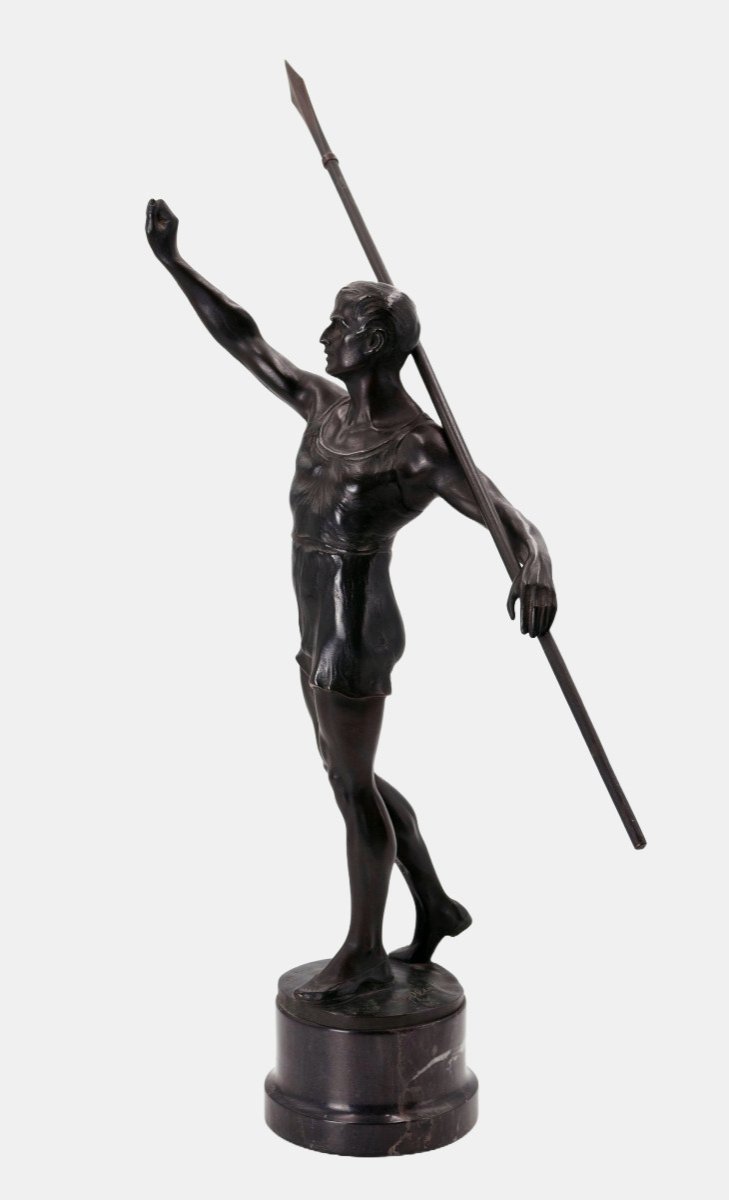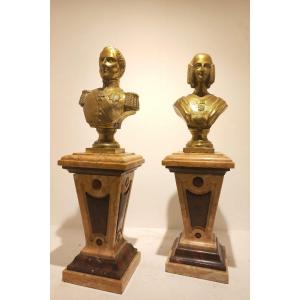- The calf of the left leg with a small restored area, patina with scratch mark at the point where the spear is attached to the head, very occasionally somewhat rubbed.
- Roman present -
As part of the physical culture that emerged in the 19th century and the popular sport that developed from it, the athlete became the new hero. In 1894, the Olympic Games were re-established, with athletics as the supreme discipline, in keeping with the ancient tradition. The javelin thrower is also associated with this. Iffland did not portray an athlete of his time, but rather the epitome of the athlete. The javelin thrower has raised his fist in triumph as he comes to a stop and looks up as if he has reached his goal. His concise facial expression is still marked by the will to win, and the immense javelin bears witness to his almost superhuman performance. His entire body displays a muscular agility that would allow him to master any other discipline.
The short haircut, combed forward, reminiscent of Caesar, and the Roman nose with its pronounced hump do not refer to Athens but to ancient Rome, so that the gesture and the gaze also have the character of the Caesar salute, which had become established as the Olympic salute in Iffland's time. Through the jersey and shoes, Iffland's athlete also refers to the present, with which the artist makes clear that the ideals of Roman antiquity should be carried into the present through sport.
About the artist
Even though Franz Iffland's work and biography have remained unexplored by art historians to this day, the Berlin sculptor was one of the most popular creators of domestic bronze sculptures of his time, who helped shape both Art Nouveau and Art Deco. He was regularly represented at the exhibitions of the Berlin Art Academy from 1862 and presented his works at the International Art Exhibition in 1891 and the Great Berlin Art Exhibition in 1893.









































 Le Magazine de PROANTIC
Le Magazine de PROANTIC TRÉSORS Magazine
TRÉSORS Magazine Rivista Artiquariato
Rivista Artiquariato